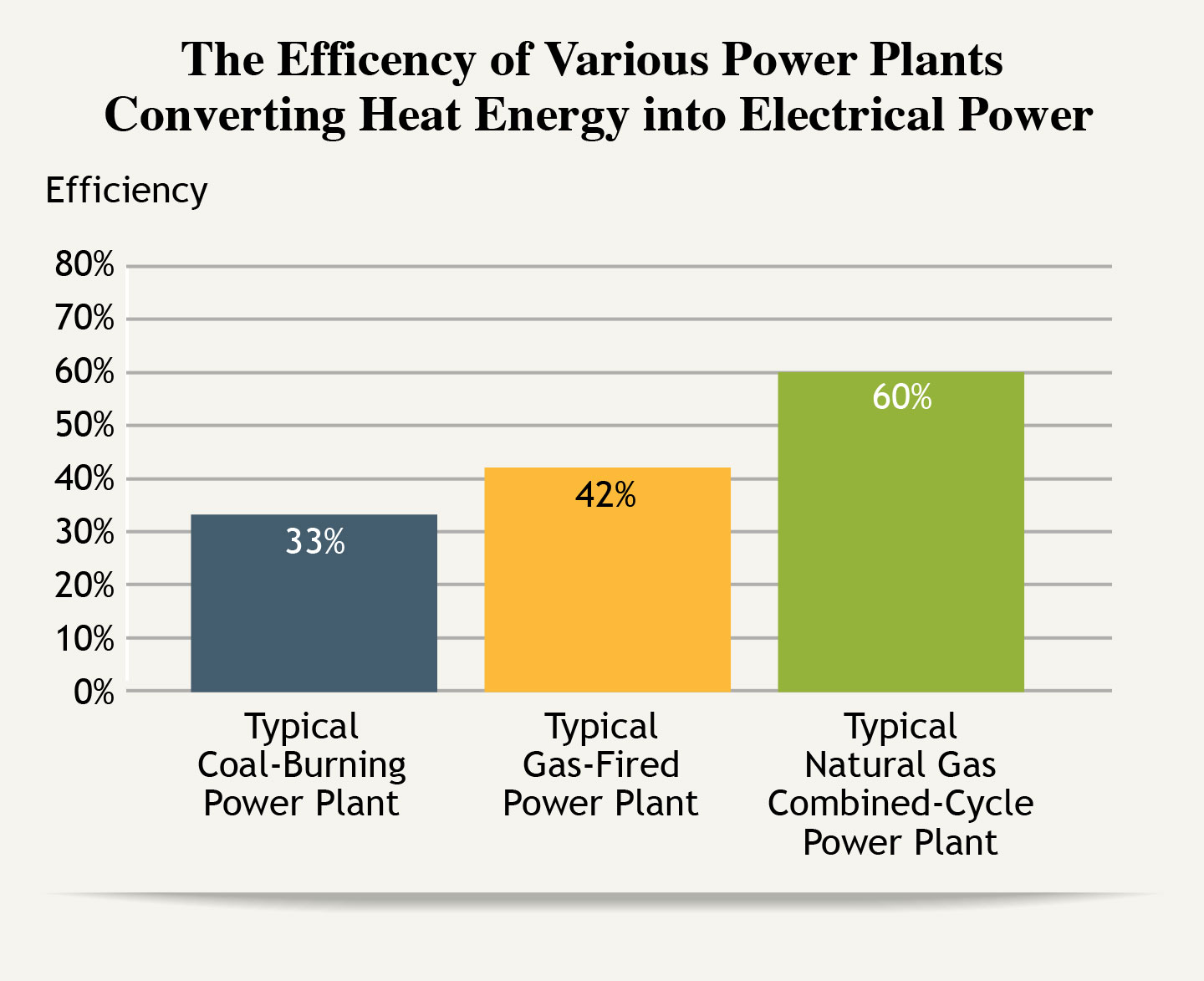Natural Gas
Natural gas provides 29% of our energy and is used to heat about half the homes in the United States. It is also a raw material in a variety of common products, such as paints, fertilizers, plastics, medicines, and antifreeze. Propane, which powers many kitchen stoves and outdoor grills as well as home heating systems, is derived from natural gas. Natural gas is also used to generate 33% of our electricity.
Unlike oil, about one-fourth of which is imported at present, virtually all of our natural gas comes from the United States.
Natural gas is often described as “clean burning” because it produces fewer undesirable by-products per unit energy than coal or petroleum. Like all fossil fuels, its combustion emits carbon dioxide, but at about half the rate of coal per kilowatt hour of electricity generated. It is also more energy efficient. On average, a typical coal-burning power plant in 2013 was about 33% efficient in converting heat energy into electrical power. A gas-fired plant was about 42% efficient. And in natural gas combined-cycle power plants—in which waste heat from a natural gas turbine is used to power a steam turbine—generation may be as much as 60% efficient.
Unlike oil, about one-fourth of which is imported at present, virtually all of our natural gas comes from the United States. Annual consumption is projected to rise by about 25% during the next 25 years, from 28.3 trillion cubic feet (tcf) in 2015 to 35.4 tcf in 2040. But the pace of discovery may rise even faster: According to the U.S. Energy Information Administration (EIA), the U.S. total proved reserves of natural gas rose by 10% in 2014 alone and reached a record high for the United States of 389 tcf. Although the United States imports some of its natural gas, it also exports a growing amount, and net imports make up less than 4% of U.S. consumption.
One reason for that increase is expanded extraction by hydraulic fracturing (“fracking”) of natural gas trapped in shale and other formations, a large resource that has increased nearly nine-fold since 2007. The EIA projects that within 25 years, shale gas will make up more than half of total domestic natural gas production. However, there are many unanswered questions about the long-term environmental impacts of the methods used to extract gas from shale.
Related topics
Source Material
- Development of Unconventional Hydrocarbon Resources in the Appalachian Basin: Workshop Summary (2014)
- Realizing the Energy Potential of Methane Hydrate for the United States (2010)
- Health Impact Assessment of Shale Gas Extraction (2014)
- Best Available and Safest Technologies for Offshore Oil and Gas Operations: Options for Implementation (2013)
- Induced Seismicity Potential in Energy Technologies (2013)
- Hidden Costs of Energy: Unpriced Consequences of Energy Production and Use (2010)


